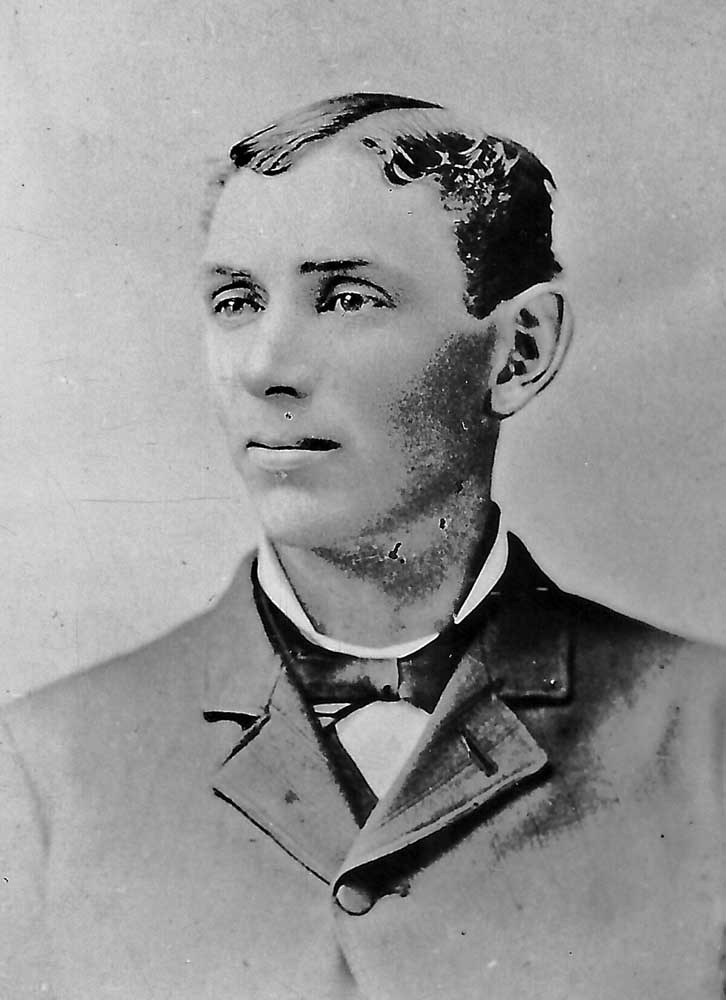Saints or Sinners? Characters of Pacific County: John Morehead’s local legacy lives on
Published 1:53 pm Thursday, July 25, 2024

- Few pictures of John Morehead exist. Perhaps he was too busy to “sit still” for a portrait now and then.
John Morehead 1859-1938
John Alvin Morehead was a man of many interests and accomplishments. He left a legacy in Pacific County seldom equaled in the years since his death more than five generations ago.
He was a stagecoach driver, a store proprietor, a Pacific County commissioner, a president of the Pacific County Pioneer Association, and an organizer of the Pacific State Bank in South Bend. He raised cattle, and grew peas and daffodil bulbs, bought the entire town of Sealand and created a large park north of Nahcotta! His energies and enthusiasms seemed limitless.
Morehead arrived in Pacific County in 1882, having made his way in “stages” across the country from his birthplace in Ohio. His first stop was Battle Creek, Michigan, where he worked in his father’s sawmill before proceeding to Yamhill County, Oregon, where he utilized his experience to work part time in a sawmill there while teaching school. Shortly, he moved north to Pacific County to work for L.A. Loomis on the stage line. He drove the stage from 1882 to 1885 and his graphic written descriptions of his experiences in that job are legendary:
“The stage drivers were required to be up at two o’clock in the morning, so as to feed, curry and harness the horses and then drive out to the oyster beds to get the load of oysters so as to be able to leave the hotel at 4:00 a.m.,” he wrote. “The stage drivers were supposed to put in 16 hours a day, but frequently worked longer.”
1885 was a big year for John. He married Lizzie Brown, the Oysterville postmistress and, with the backing of oomis, he entered the store business. For the next four years, he also served at the Oysterville postmaster, but in 1889 when the narrow-gauge railway made its northern terminus in Nahcotta, four miles to the south, John saw the handwriting on the wall. With the northern end of the IR&N at Nahcotta, freight and passenger business on the Peninsula would terminate too far from Oysterville to keep the little town viable.
Morehead’s store was among the first of the Oysterville businesses to move south and most of the others, including the Peninsula’s only newspaper, followed in short order. John and Lizzie built a handsome house with a widow’s walk — a structure that still stands today across the road from the Shellfish Laboratory in Nahcotta. The Moreheads had three children — Enola, Bess and John — who grew up in Nahcotta hunting for arrowheads and playing with the Wiegardts and the children of other early families.
Despite all of his other responsibilities and interests, John continued to run the Nahcotta Store for 26 years before selling it to his brother-in-law, Henry Brown, and son-in-law Torvald Trondsen.
By 1895, Morehead built a handsome branch store in Ocean Park and, though it has been re-built several times, still holds the distinction of being the forerunner of today’s Jack’s Country Store.
During his lifetime, he was Pacific County commissioner for a total of 14 years including 1893 when the county seat at Oysterville was “kidnapped” by a group known as “The South Bend Raiders.” It was also a matter of some pride among the Democrats of the county that Morehead was elected on the Democratic ticket in a county that was overwhelmingly Republican.
Of all of his accomplishments, however, it was ultimately his development of Camp Morehead and Morehead Park that gave him greatest pleasure. Shortly after Loomis selected Nahcotta as the terminus for his narrow-gauge railroad, B.A. Seaborg sold his neighboring town of Sealand to Morehead. Part of that property became Morehead Park, part became Camp Morehead, and part became the right of way for the county dock, which he donated “for the good of the public forever.”
He spent much of his “retirement” keeping Morehead Park and Camp Morehead attractive and available to the public. Summer Sundays to “the locals” meant swimming and a picnic at Morehead Park. There on the grounds, Morehead constructed tables, cooking ovens and a bathhouse. There were also unique items displayed, like the boiler out of the erstwhile Pacific City from the first sawmill west of the Rockies, the Wm. Beggs’ figurehead from the wrecked bark Glenmorag, and an Indian canoe over the entranceway to the park.
In 1938, Morehead died of a stroke that occurred while he was sitting in his car in the driveway of Morehead Park. Hopefully, he was enjoying his endeavors right up until the end.









